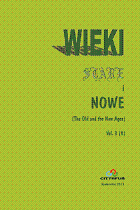Political leaders of NSDAP inthe Pszczyna County between 1939 and 1945. The analysis of collectivity.
Political leaders of NSDAP inthe Pszczyna County between 1939 and 1945. The analysis of collectivity.
Author(s): Wojciech KapicaSubject(s): History
Published by: Wydawnictwo Uniwersytetu Śląskiego
Keywords: NSDAP leaders; collective; Pszczyna; the Pszczyna County; 1939-1945; extraction and ethnicity of the NSDAP party members; sociological characteristics of the collective
Summary/Abstract: The article offers an analysis of the collectiveness of political leaders of NSDAP in the Pszczyna county between 1939 and 1945 (Pszczyna county was one of the Polish territories included directly into the Reich in Autumn of 1939). This category of NSDAP members in the Katowice notary has not been the subject of academic considerations so far. The analysis of the group under examination took into account the birth place of iondividual NSDAP members (i.e., to what an extent the collective consisted of Reichsdeutches from the Old Reich and to what an extent it was composed of the local Volksdeutches), age (whether they were young or middle-aged), the socio-professional structure, experience in NSDAP, gender, the attitude to the army service, family and belief. The author has established that the majority of political leaders came from the territories of the Katowice notary, which, before September 1939, belonged to Poland (higher number of local Nazis over NSDAP members from the Old Reich). He also noticed the dominance of middle-aged people in the collectivity in question, numeric advantage of men over women, and a slight predominance of proletariat representatives over lower middle class.
Journal: Wieki Stare i Nowe
- Issue Year: 8/2011
- Issue No: 3
- Page Range: 82-105
- Page Count: 24
- Language: English

